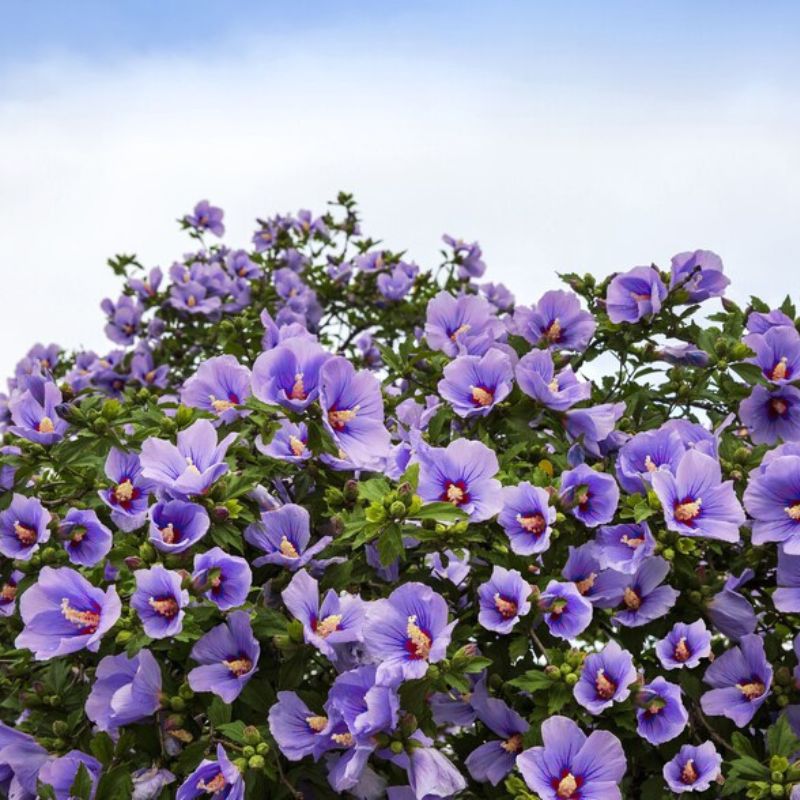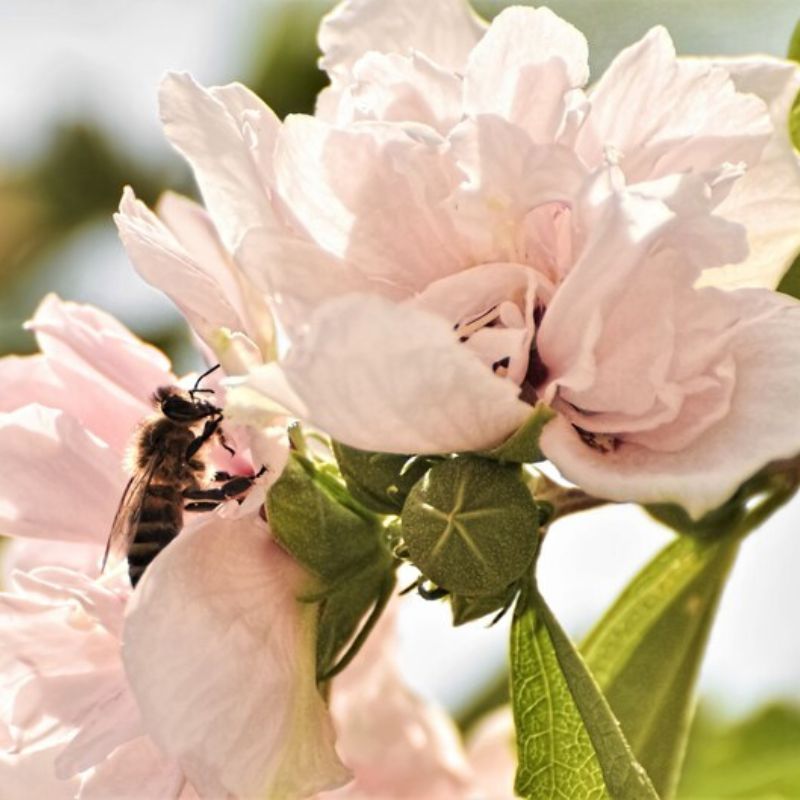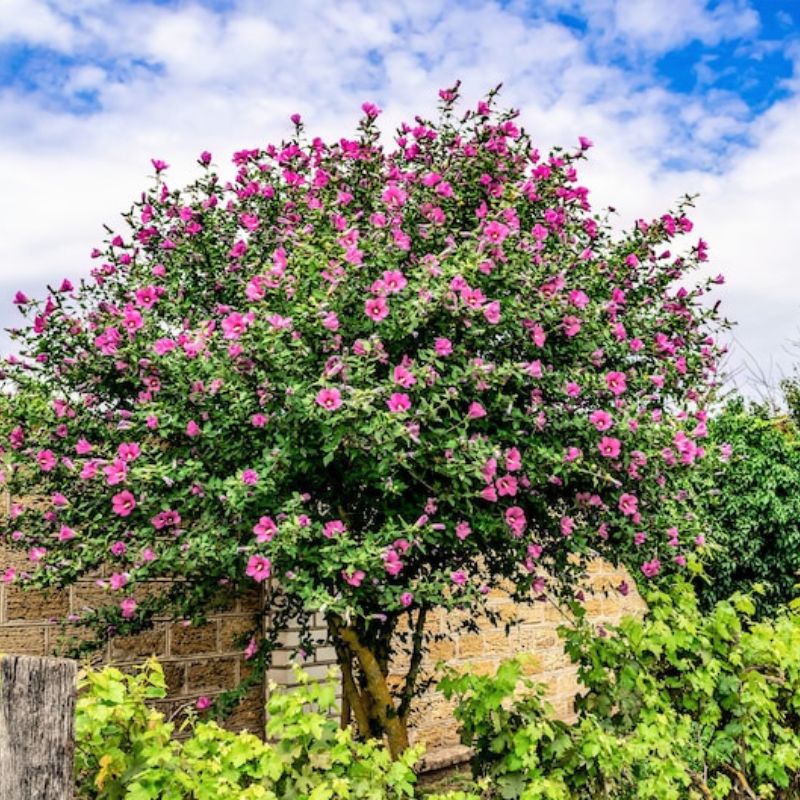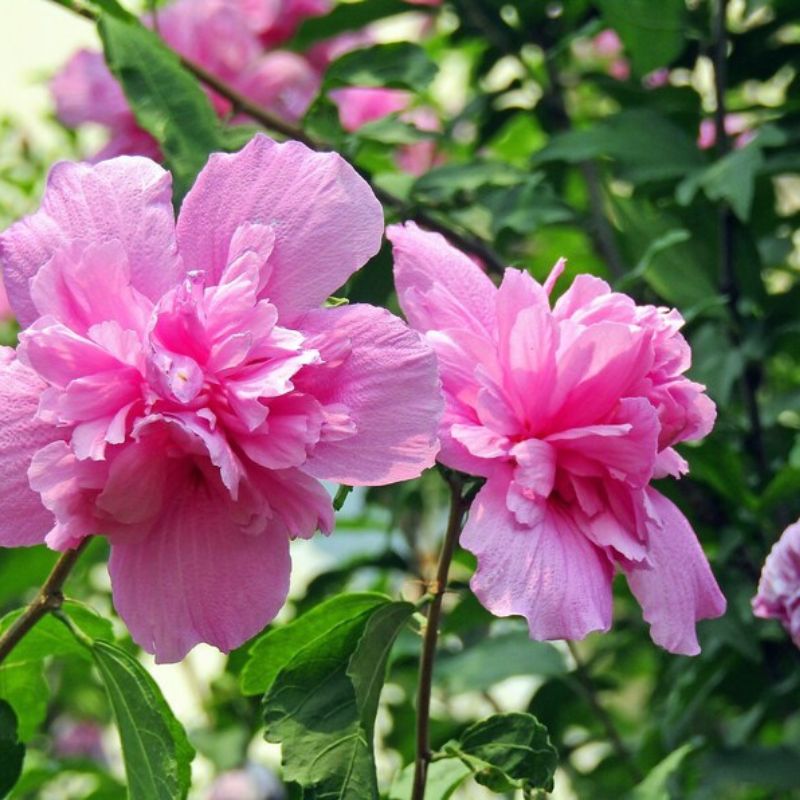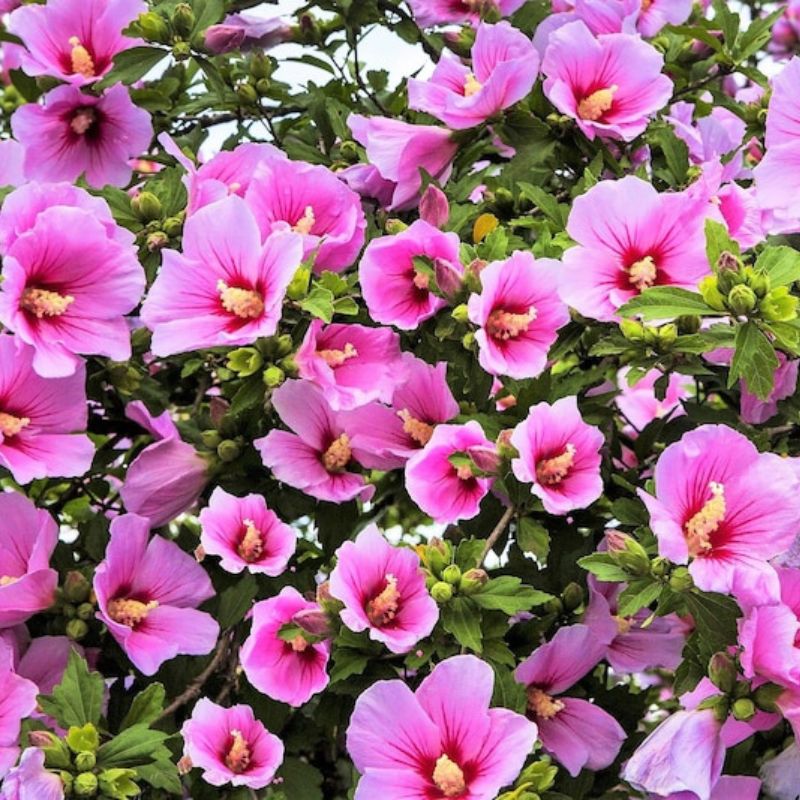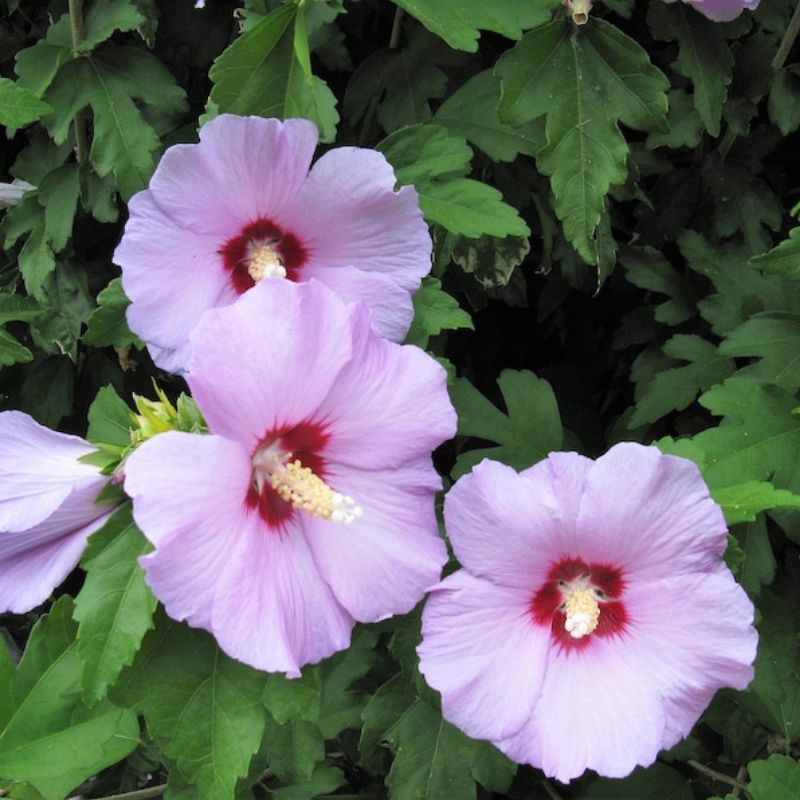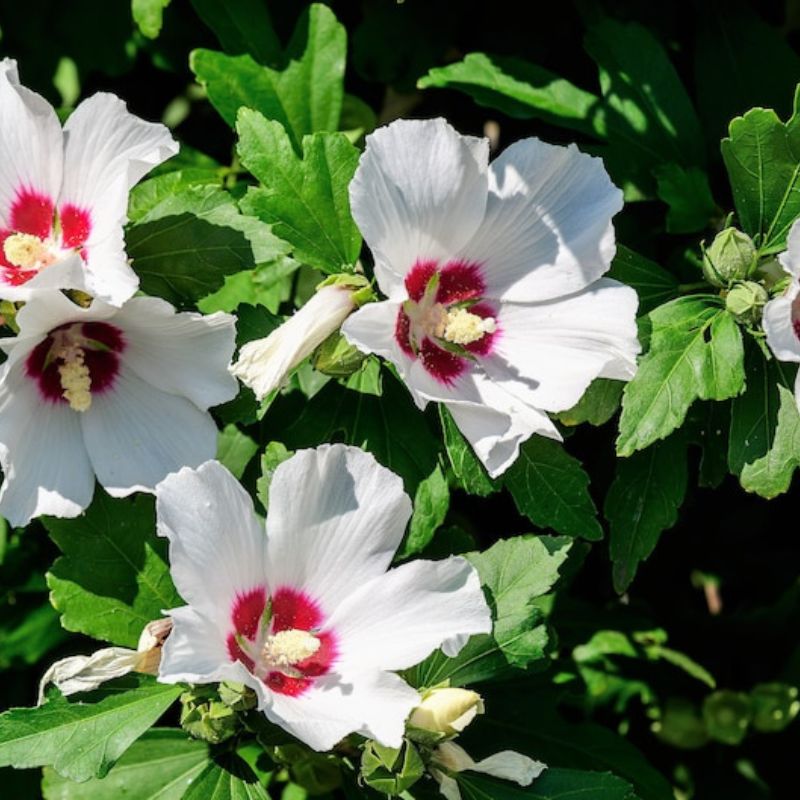- Historical context: Hibiscus syriacus, commonly known as the Rose of Sharon, has been cultivated for centuries for its ornamental beauty and medicinal properties.
- Geographical origination: This plant is native to East Asia, particularly in China and India.
- Relevant cultural significance: In Korea, Hibiscus syriacus is the national flower and is deeply embedded in the country's cultural and historical identity. It symbolizes the Korean people's perseverance and determination.
- Time period of discovery: The exact time of discovery is not well-documented, but it has been known and cultivated since ancient times in its native regions.
- Original habitat: Hibiscus syriacus thrives in temperate climates and is commonly found in forest edges, riverbanks, and open fields in its native regions.
- Notable historical uses: Historically, Hibiscus syriacus has been used for ornamental purposes in gardens and landscapes. It also has traditional medicinal uses, such as treating fevers and dysentery.
- Ideal temperature range: Hibiscus syriacus grows best in temperatures ranging from 60°F to 85°F (15°C to 29°C).
- Soil type: It prefers well-drained, loamy soil but can tolerate a variety of soil types, including sandy and clay soils.
- Sunlight requirements: Full sun to partial shade. It requires at least 6 hours of direct sunlight per day for optimal growth.
- Watering needs: Moderate watering is required. The soil should be kept consistently moist but not waterlogged.
- Planting season: The best time to plant Hibiscus syriacus seeds is in the spring after the last frost or in early fall.
- Germination time: Seeds typically germinate within 2 to 4 weeks under optimal conditions.
- Growth cycle duration: Hibiscus syriacus is a perennial plant, meaning it will grow and bloom year after year.
- Common pests and diseases: Common pests include aphids, whiteflies, and spider mites. Diseases such as leaf spot and root rot can also affect the plant.
- Companion planting advice: Good companion plants include marigolds, lavender, and other flowering perennials that attract beneficial insects.
- Common challenges and solutions: One common challenge is root rot due to overwatering. Ensure proper drainage and avoid waterlogging the soil. Another issue can be pest infestations, which can be managed with insecticidal soap or neem oil.
- Nutritional values: While not commonly consumed, the flowers and leaves of Hibiscus syriacus contain antioxidants and vitamins.
- Health benefits: Traditionally, parts of the plant have been used to treat fevers, dysentery, and other ailments. The plant has anti-inflammatory and antioxidant properties.
- Culinary uses: The flowers can be used to make herbal teas, which are known for their refreshing taste and health benefits.
- Medicinal uses: In traditional medicine, Hibiscus syriacus has been used to treat a variety of conditions, including respiratory issues and digestive problems.
- Other unique advantages: Hibiscus syriacus is highly valued for its ornamental beauty, making it a popular choice for landscaping and garden design. It also attracts pollinators such as bees and butterflies, contributing to the health of the ecosystem.
